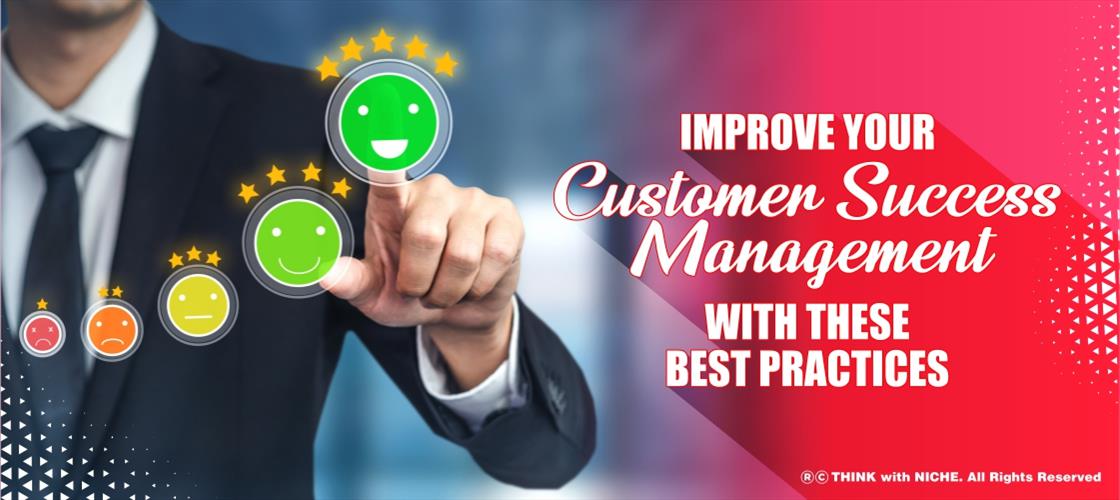7 Habits of Great Customer Success Managers

Blog Post
When your customers achieve their desired outcome as a result of their interactions with your company, this is known as customer success.
To ensure that your customers achieve their Desired Outcome – or what they need to achieve, and how they need to achieve it – rather than just hoping for it, you must actively work with them toward that goal.
It is where Customer Success Management comes into the picture. This article explains the 7 Habits of Great Customer Success Managers. #TWN
On the surface, becoming a CSM appears to be a simple task. It's "assisting the consumer in assisting themselves."
Anyone who has been on the job for more than two days would tell you that it is far more.
Many people can join a company and become competent, if not excellent, Customer Success Managers. However, it is the outstanding CSMs who truly make a difference.
A great CSM raises the company's profile. They take a customer's business-related fears away. They cultivate devoted consumers who are willing to walk through fire (or speak with your marketing department) if you ask.
To become a great CSM, you must put in the effort. It necessitates both technical and interpersonal abilities. Patience and forethought are required. Discipline and organization.
We want you to be an excellent CSM.
That's why we polled the top Customer Success Managers and Customer Service Specialists we know. We compiled a list of the most prevalent behaviors and have included it here for you to learn from and emulate.
7 Habits of Great Customer Success Managers
Let's explore the must-have habits of a great customer success manager:
Teaching not Doing
As a CSM, you are well-versed in the product and (ideally) know how to troubleshoot any issues that arise.
But it's not your responsibility to remedy the problem; it's your job to train the consumer.
It's tempting to simply make a list of your customers' problems and fix them on your own time. But, in reality, who are you assisting? Yes, the problem has been resolved, but because the customer does not understand why and how it occurred, they are likely to repeat the same error in the future.
Put your customer on the spot. Take them through the process of repairing it on their own so that they can gain some independence. It will go a long way toward making your product "stickier" and increasing their trust in it.
Who can say? They might even turn out to be an inside resource! Encourage them to share their knowledge with the rest of their team. It will elevate their status inside the organization as the "go-to" person for your product.
Understand the “Why”
When a consumer complains about a feature, they aren't complaining about the feature.
They're grumbling about not being able to complete a task and not getting the desired results.
Get to the bottom of the problem. Determine the root cause of the problem and proceed from there.
Doing things from the ground up allows you to generate viable alternatives. Even if it doesn't, you'll be able to send the information on to the product team, allowing them to better grasp the customer's genuine issues.
Answer Immediately, but Don’t Answer Immediately
Customers despise waiting, especially when it comes to matters that they regard as critical. They have a valid point though. A quick reaction leads to an excellent customer service experience.
But if inquiries and help requests come in thick and fast, you won't be able to handle them all at once. But you don't want to keep the customer waiting, so what are you going to do?
Always respond to incoming queries as soon as possible. Set expectations for when you will be able to respond to them (e.g., later on in the week). It informs customers that their concern has been heard and that someone is working on them.
Customers will be satisfied in the near term, while you will have breathing room to explore concerns and remedy difficulties.
Share Insights across the Organization
You may not be aware of it, but you are sitting on a gold mine.
You have direct contact with the customer. Every day, you hear about how the product—and every modification you make to it—affects people's lives.
Don't keep that knowledge to yourself!
Share consumer experiences and feedback with the rest of your team. Other departments, such as engineering and marketing, do not have the luxury of hearing directly from customers, and your insights can only help them.
By sharing knowledge, you will bring the firm together as everyone learns about customer narratives and the impact of product decisions.
Recharge your Batteries
If you're going to look after your consumers, you have to look after yourself as well.
Customer success is a demanding position. Working remotely, where there is less separation between work and home life, it's easy to feel overwhelmed and overworked.
Take some time to relax. Taking a day off is a good idea. When you return, the customer will still be there.
Allow the customer to function independently while you are away. It motivates kids to the take initiative and study on their own, as well as reaffirming their worth. You'll be able to chat to them refreshed and energetically if they're still stumped and need help.
Develop Good Pre and Post-Meeting Habits
Meetings elicit strong reactions from everyone, but we can all agree that they are still vital.
You'll want to make the meetings as valuable and fruitful as possible as a good CSM. It is considerate of everyone's time and encourages productivity.
Setting an agenda is one strategy to protect people's time. Make a detailed outline of what will be discussed and stick to it. I've attended many meetings where the agendas were considered as "guidelines," and they were all a waste of time.
Make your agenda known. Send it to others so that they may keep you accountable during the call (and so that you don't become defensive if they do).
Support, not Obedience
It's in your job description for you to assist the customer.
You're not expected to be available to them at all times.
I had had a customer who called me several times a week, requesting that I complete a work that she could easily complete herself. She was insistent that it was too much for her and that if I did it, it would be faster.
There's a distinction to be made between support and enabling, and customer success managers sometimes have difficulty distinguishing between the two.
As much as you can, assist your customer, but not at the expense of other customers. Concentrate on your training. Give them the knowledge they need to address their difficulties in the future. Customers will be more confident in their abilities, and you will have more time to complete your tasks.
I re-trained my customer on the task in a fast 15-minute training session with her. She initially resisted, but it gradually became second nature to her, to the point where she was able to train the rest of her squad.
Win-win!
Conclusion
You don't have to acquire all of the aforementioned habits at once (although I really hope you do). Growth occurs over time rather than all at once. Incorporate them into your process and observe how they affect your outcomes.
Are you completing more tasks? Are your customers more satisfied? Are you becoming more self-sufficient?
Adopt and assess. Don't take my word for it! Pick a plan that works for you and progress at your own pace. Greatness is gradual - it is not instant!
If you liked reading this article, we have two more for you. Click on the link below to explore!
Improve Your Customer Success Management

Tips to Improve Relationship with your Customers and Employees

You May Like
EDITOR’S CHOICE












